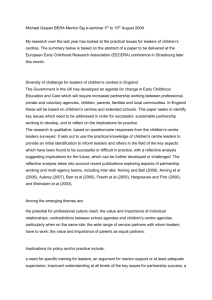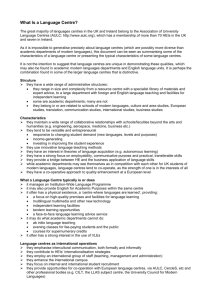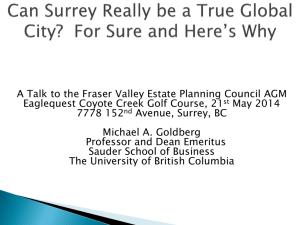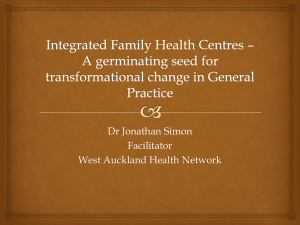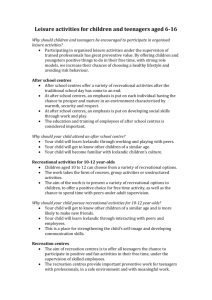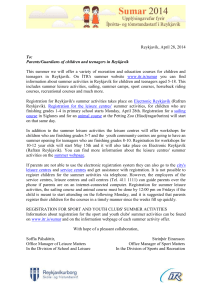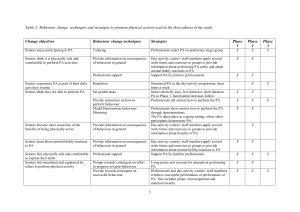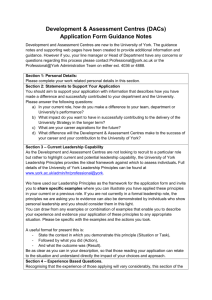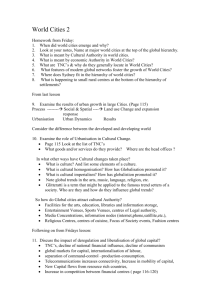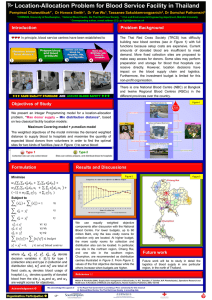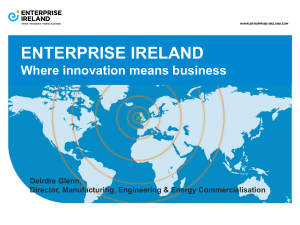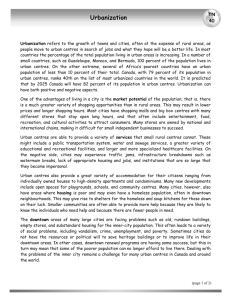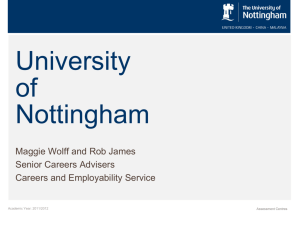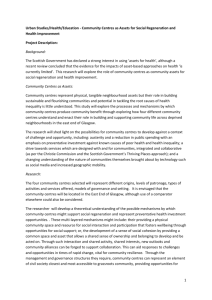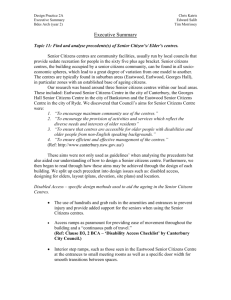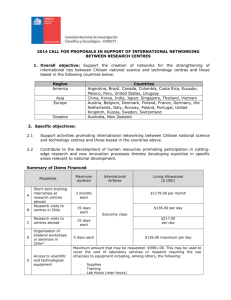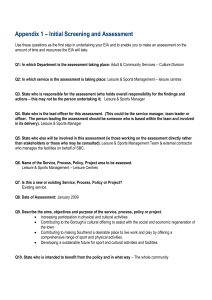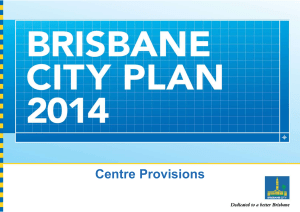Community Development – Hierarchy and diversity of services
advertisement
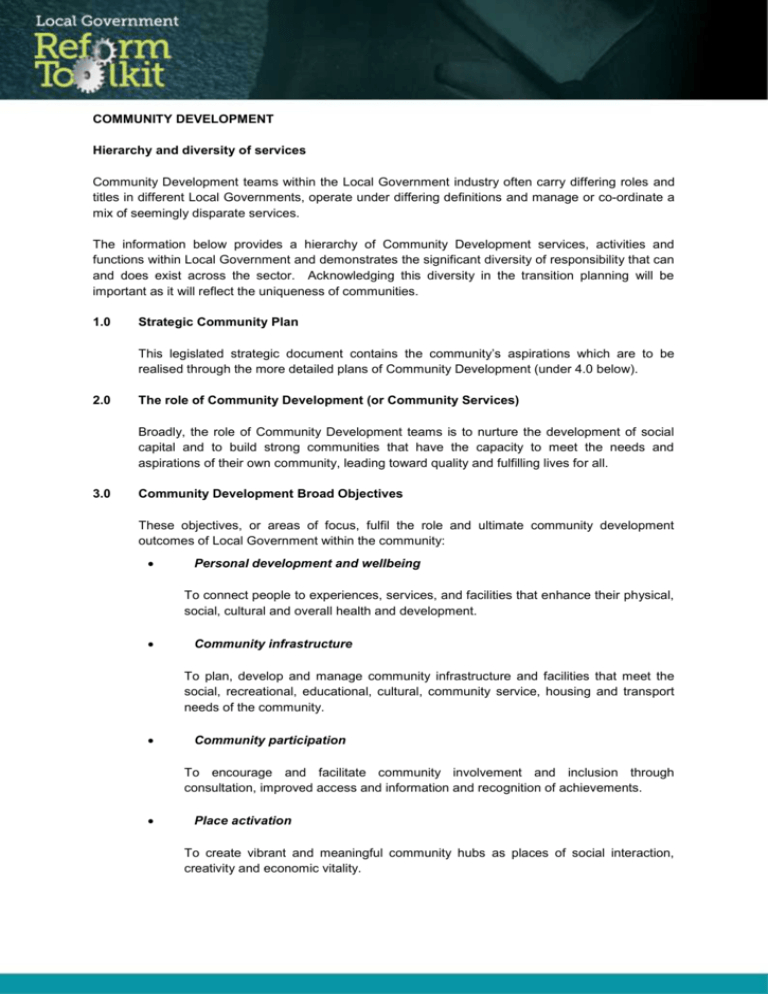
COMMUNITY DEVELOPMENT Hierarchy and diversity of services Community Development teams within the Local Government industry often carry differing roles and titles in different Local Governments, operate under differing definitions and manage or co-ordinate a mix of seemingly disparate services. The information below provides a hierarchy of Community Development services, activities and functions within Local Government and demonstrates the significant diversity of responsibility that can and does exist across the sector. Acknowledging this diversity in the transition planning will be important as it will reflect the uniqueness of communities. 1.0 Strategic Community Plan This legislated strategic document contains the community’s aspirations which are to be realised through the more detailed plans of Community Development (under 4.0 below). 2.0 The role of Community Development (or Community Services) Broadly, the role of Community Development teams is to nurture the development of social capital and to build strong communities that have the capacity to meet the needs and aspirations of their own community, leading toward quality and fulfilling lives for all. 3.0 Community Development Broad Objectives These objectives, or areas of focus, fulfil the role and ultimate community development outcomes of Local Government within the community: Personal development and wellbeing To connect people to experiences, services, and facilities that enhance their physical, social, cultural and overall health and development. Community infrastructure To plan, develop and manage community infrastructure and facilities that meet the social, recreational, educational, cultural, community service, housing and transport needs of the community. Community participation To encourage and facilitate community involvement and inclusion through consultation, improved access and information and recognition of achievements. Place activation To create vibrant and meaningful community hubs as places of social interaction, creativity and economic vitality. Relationships building and connections To build self-reliant community organisations and develop mutually beneficial partnerships between community, government, non-government, business and residents. 4.0 Community Development Specific Purpose Plans Plans and strategies that realise the Community’s aspirations can include: 5.0 Youth Development Strategy Active Ageing/Seniors Strategy Sport, Recreation, Leisure Strategy Culture and the Arts Strategy Library and Information Services Strategic Plan Community Safety Strategy (including Fire and Emergency Plans) Learning City Strategy Early Years and Families Strategy Community Infrastructure Plan Disability Access and Inclusion Plan Reconciliation Action Plan Facilities Management Strategies Community Development Target Groups/Stakeholders Populations: Early years, Children and families Young people Adults Seniors People with disabilities People of culturally and linguistically diverse backgrounds Aboriginal and Torres Strait Islanders Residents, visitors; Networks, community groups, associations, clubs; Neighbourhoods, geographic communities, communities of interest, relational communities, virtual communities; Institutions and professional establishments (schools, hospitals, churches) Government and non-government services and organisations; Businesses and commercial enterprise. 6.0 Community Services 6.1 Community support services HACC Services Residential care Commonwealth programs e.g. Seniors ACHA Long Day Child Care / Out of School Hours Care Youth Services (e.g. family and youth counselling) Community transport Women’s Health Services Refuges and crisis care Development of the ‘welfare’ not for profit sector 6.2 Community Capacity Building: Programs that build community capacity Sport and Recreation Healthy lifestyles and health promotion (e.g. Act Belong Commit) Culture and the Arts Youth development Active Ageing / Age Friendly City Learning City Reconciliation Action Plan Disability Access and Inclusion Programs Neighbourhood Watch / Community Safety Programs Museums and community heritage programs Programs for Culturally and Linguistically Diverse populations Community empowerment – Community Grants; Community run events. Local Government events Volunteer Resources Centre 6.3 Community infrastructure planning Community and leisure facilities feasibiltiy and business case studies Community infrastructure planning Community capital grants 6.4 Libraries and information services Public libraries Resource centres 6.5 Community / Leisure Facilities Management (by LG, or others on behalf of LG) Public halls and community centres Sports ovals / reserves, clubrooms. Sporting complexes / leisure centres Aquatic centres Contemporary, performing arts and cultural centres Visitors / tourist centres / museums 6.6 Community Safety Community safety and crime preventions programs e.g. Neighbourhood watch; Crime prevention through environmental design; Seniors safety; Graffiti paint out. Community security / safety patrols Security of Local Government assets Rangers / parking Fire services / Bushfire brigades Emergency Services 6.7 Economic Development 7.0 Organisational structure and systems 8.0 Annual operating plans/team plans Programs, services, staffing and funding resources needed, informing the annual budget. Community Development – Diversity of Services | Page 5


